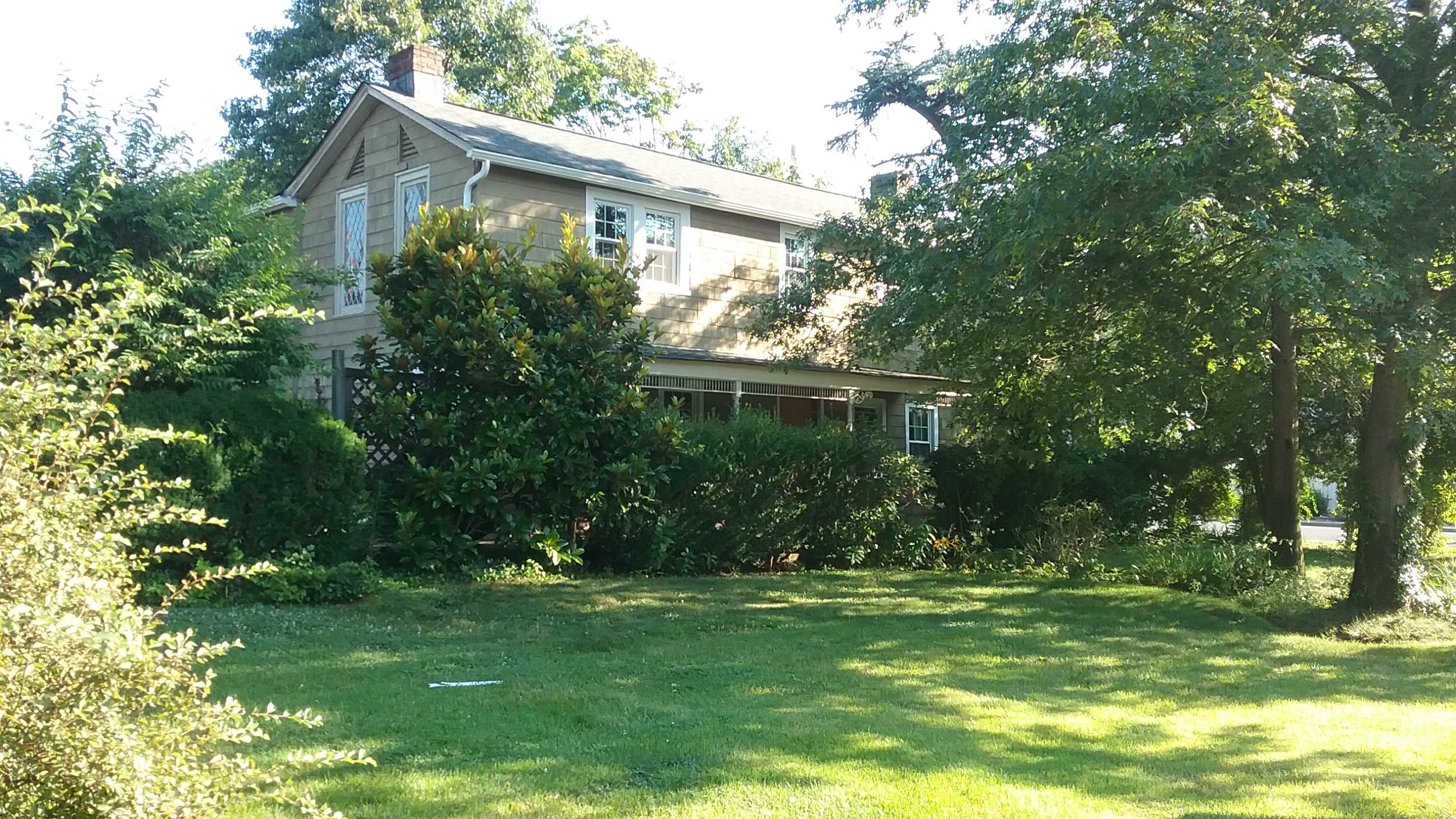House offers a glimpse of Rockville Centre’s past
Aldred Ave. home estimated to be 300 years old
Nestled on an otherwise normal suburban street on the south side of town, one of Rockville Centre’s historical treasures sits beneath a thick canopy of overhanging trees. From the long, low porch of the house — estimated to be almost 300 years old — the surrounding neighborhood is hard to see through the foliage.
“I’ve heard that this house was an old Indian trading post,” Bill Devlin, a trustee of the Phillips House Museum, which also serves as an informal historical society for the village, said of the Aldred Avenue home.
“I’d heard that too!” said the homeowner, Carolyn Lyson, who has lived there for nearly 45 years. The colonial farmhouse was most likely built in the early-to-mid 1700s, and retains many of its original features, according to Bill’s wife, Marilyn Nunes Devlin, author of “A Brief History of Rockville Centre” and the Phillips House archivist.
“This was all farmland back then,” Marilyn said. “It was an agricultural community,” which she added, was comprised of mostly British colonials and Dutch farmhouses like the Lysons’ house.
There’s no way to know the full history of the home, Lyson said. “We don’t know a thing about the people who lived here before us, or what they did to the place,” she added.
However, she said that she knows her property is rare in Rockville Centre. “If someone moved in here, I just know they’d tear the place down, split the property and build two houses,” she said.
Lyson and her late husband, Al, tried to get the property declared a landmark shortly after they moved in to preserve it for the future, but they were unsuccessful.
At a meeting of the Village Board of Trustees in July, Ellen Grossman, treasurer of the Rockville Centre Museum, asked the board to look into creating a process for designating historical sites for preservation. Grossman said that a controversial development plan at 220 Hempstead Ave., which would include the demolition of what many residents have claimed is a historical home, had rekindled local interest in preservation.
Meghan Kearns, a lawyer with a degree in history, says that the state already grants municipalities the authority to zone for historical districts. Doing so sets up additional regulations to development, Kearns said, and gives local governments more oversight on construction that threatens historic properties.
When the Lysons moved into the house in 1973, they began a long process of unearthing the original building. The exposed wooden beams in the cozy, low-ceiling living room used to be covered in black paint, she said, before they had the paint stripped, revealing the warm grain of the originals. “We think that this entire room is pretty much what it was when the place was built,” Lyson said.
The hardwood floors and the fireplace are original, “and we think that door is too,” she added, gesturing to the bedroom door situated next to the living room. When they had re-done the bedroom wall, they discovered the remains of a beehive oven. Inside the walls, they stumbled upon newspapers from the 1890s, indicating that the bedroom may have been constructed as an extension around that time.
On the other side of the living room is the dining room, with a large step up that makes the already low ceiling seem lower. “We don’t know why that step is there,” Lyson said, adding with a chuckle that Al was over six feet tall, as are three of
her sons.
“When we got here, there was wall-to-wall carpet, so we ripped that up,” she recalled. “We think that this wood floor is original too.”
When the couple bought the house, they had no idea they were moving into a piece of history. “My husband was a fantastic history buff, and once we found out about it, we decided we were going to do the best we could to preserve it in honor of everyone who lived here in the past,” Lyson explained. “When we first moved in, we wondered, ‘What had people done in this house? What were they like?’”
Now, she rarely thinks about that. The Aldred Avenue house is simply her home. Every so often, though, she thinks back to when it was all farmland, when “Lincoln Avenue was probably just a pathway for horses.” She thinks about the original inhabitants.
“What would the ghosts of this house think about all the traffic?” she asked. “And all the other changes in the town, and in the world?”

 43.0°,
A Few Clouds
43.0°,
A Few Clouds 




